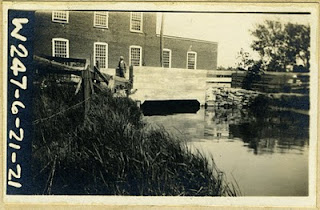Dr. Swithin Chandler
Dr. Swithin Chandler, M.D. While it's true that Mill Creek Hundred doesn't boast many residents who attained a national level of fame or influence, it doesn't mean that there haven't been plenty of our sons and daughters who have been important on the state or local level. Then, as now, there have always been those special people who seem to show up everywhere and have a hand in almost every aspect of community life. One such person in the mid-to-late 19th century was Dr. Swithin Chandler, M.D. Swithin Chandler was born in 1830, the second child of Thomas Jefferson and Sarah Yarnall Chandler. The Chandlers and Yarnalls were both prominent families in the area, and among the future doctor's many relatives were his uncle Abram, who operated the old Harlin mill at Milltown, and (I think) his mother's cousin Holton Yarnall, who operated the Yarnall Tavern at Brandywine Springs. At about age seven, Swithin went to live with his grandparents, who I assume lived near








